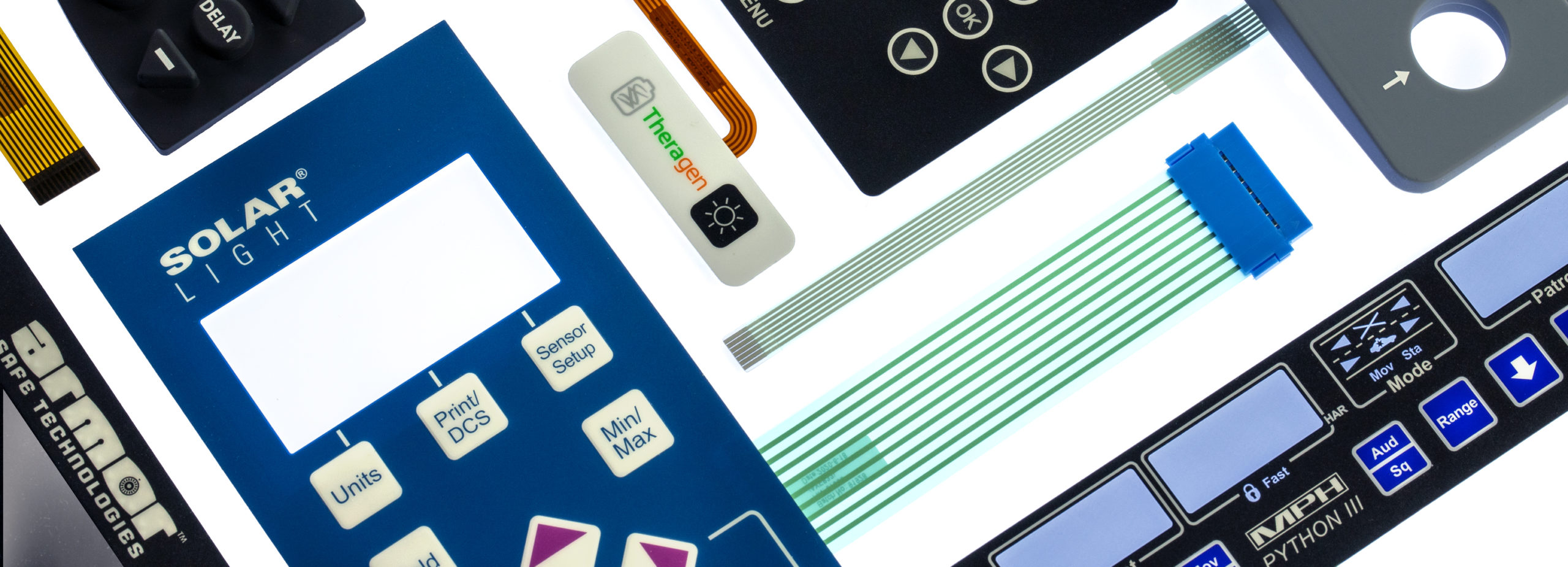The Future of Membrane Switch Technology in the Vehicle Systems
The Future of Membrane Switch Technology in the Vehicle Systems
Blog Article
Why Membrane Layer Switches Are Essential for Long Lasting Control Equipment
Membrane layer buttons play an essential role in ensuring the sturdiness and reliability of control systems across different markets. Their unique construction enables them to withstand difficult environmental variables such as humidity, temperature extremes, and physical wear. This durability not just extends the lifespan of the systems they serve but also decreases upkeep needs. As we check out the diverse benefits of membrane layer switches, it comes to be obvious that their significance transcends plain performance, affecting individual experience and operational effectiveness. What additional implications do these characteristics hold for the future of control system style?
Overview of Membrane Layer Buttons
Membrane buttons are flexible and trusted parts generally made use of in numerous electronic control systems. These buttons include a number of layers, including a visuals overlay, a spacer layer, and a printed circuit layer. The graphic overlay provides both practical and aesthetic style, while the spacer layer guarantees that the buttons are activated just when pressed. The printed circuit layer includes conductive traces that complete an electric circuit when the membrane is pushed, allowing the device to reply to individual inputs.
Membrane layer switches are usually favored in applications calling for a small and light-weight design, making them optimal for portable gadgets, medical devices, and commercial equipment. They can be tailored to fulfill specific user requirements and can incorporate different features such as backlighting, tactile comments, and numerous shades. Membrane switches are resistant to dust, dampness, and contaminants, making them suitable for atmospheres where sturdiness is vital.
Advantages of Sturdiness
In lots of applications, the toughness of membrane layer switches over deals substantial benefits that boost their general efficiency and dependability. These buttons are designed to withstand rough atmospheres, making them excellent for usage sought after problems such as high moisture, severe temperatures, and direct exposure to chemicals. Their durable building and construction assists to stop damages from physical effect, ensuring durable capability and reducing the need for frequent replacements.
Additionally, membrane layer switches are immune to deterioration, which is important in applications where constant interaction occurs. This durability converts to lower upkeep prices, as organizations take advantage of lowered downtime and less solution disruptions. Additionally, the encapsulated layout of membrane layer changes protects internal components from dirt and wetness access, additional adding to their life expectancy.
One more advantage is their capacity to keep consistent performance with time. With a high resistance for mechanical tension, these buttons preserve their tactile responses and electrical honesty, guaranteeing customer complete satisfaction. Inevitably, the sturdiness of membrane switches over not only boosts functional efficiency but likewise fosters confidence in their dependability, making them a preferred option for control systems across numerous markets.
Applications in Numerous Industries
Sturdy control systems employing membrane layer switches locate comprehensive applications throughout a series of markets, each gaining from the one-of-a-kind attributes these switches use. In the clinical industry, membrane buttons are important for tools such as patient monitors and diagnostic tools, where dependability and simplicity of cleansing are extremely important. Their resistance to wetness and impurities ensures they keep capability in sterilized settings.
The vehicle industry leverages membrane switches for control panel controls and infotainment systems, where they provide streamlined, low-profile interfaces that improve individual experience. These buttons are also designed to stand up to extreme problems, consisting of direct exposure to severe temperature levels and resonances.
In commercial setups, membrane switches are frequently used in machinery control panels, supplying tactile feedback and sturdiness essential for high-usage applications. Their capacity to withstand chemicals makes them appropriate for making settings where spills and contaminants are regular.

Customer electronics, such as cooking area devices and remote controls, also make use of membrane switches for their versatility and cost-effectiveness. On the whole, the adaptability and durable nature of membrane layer changes make them essential across numerous markets, ensuring efficient procedure and long life in control systems.
Style and Visual Appeal
While capability is vital, the design and visual charm of control systems equipped with membrane layer switches play an essential duty in user engagement and total experience (membrane switch). The visual design of these buttons can substantially influence user assumption and communication. A well-designed membrane layer switch boosts the appearance of the gadget, making it extra appealing to customers and promoting a connection in between the user and the item
Membrane switches use a fantastic bargain article source of flexibility in layout, allowing producers to tailor graphics, colors, and textures to line up with brand identification and item looks. The use of lively shades and distinct patterns can draw interest, while tactile responses can enhance the user's communication with the device. Furthermore, the ability to incorporate LED indications and backlighting into the membrane layer switch style gives both practical and visual benefits, enhancing exposure and usability in different environments.

Enhancing User Experience

Furthermore, membrane switches can be customized to incorporate graphical user interfaces, boosting use by offering details in a clear and instinctive fashion (membrane switch). This personalization can consist of icons, labels, and color coding that guide users through facility functionalities effortlessly. Additionally, their versatility enables assimilation in different environments, guaranteeing consistent efficiency whether in commercial equipment or consumer electronics
The durability of membrane layer buttons likewise plays a vital function in user experience. By withstanding rough problems and prolonged usage, these switches decrease the likelihood of system you can look here failings, thus promoting page integrity and individual confidence. Inevitably, the calculated usage of membrane layer changes not only boosts functionality however likewise considerably enriches customer communication with control systems, making them an essential part in modern-day style.
Final Thought

Report this page